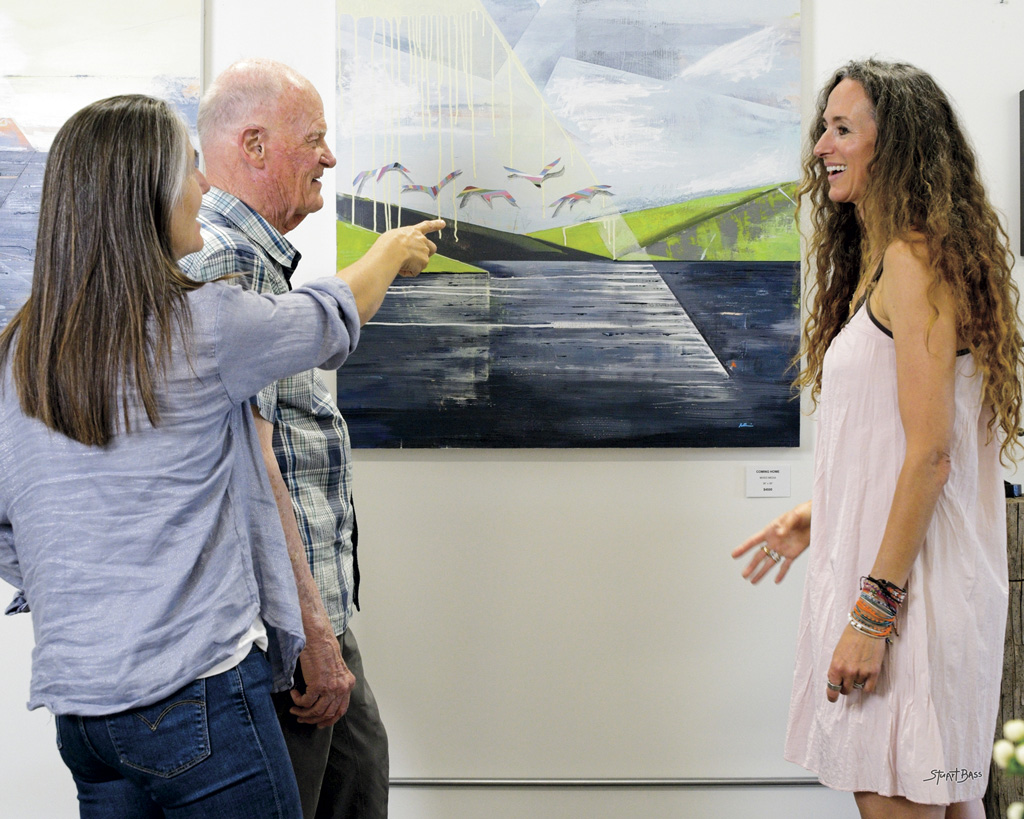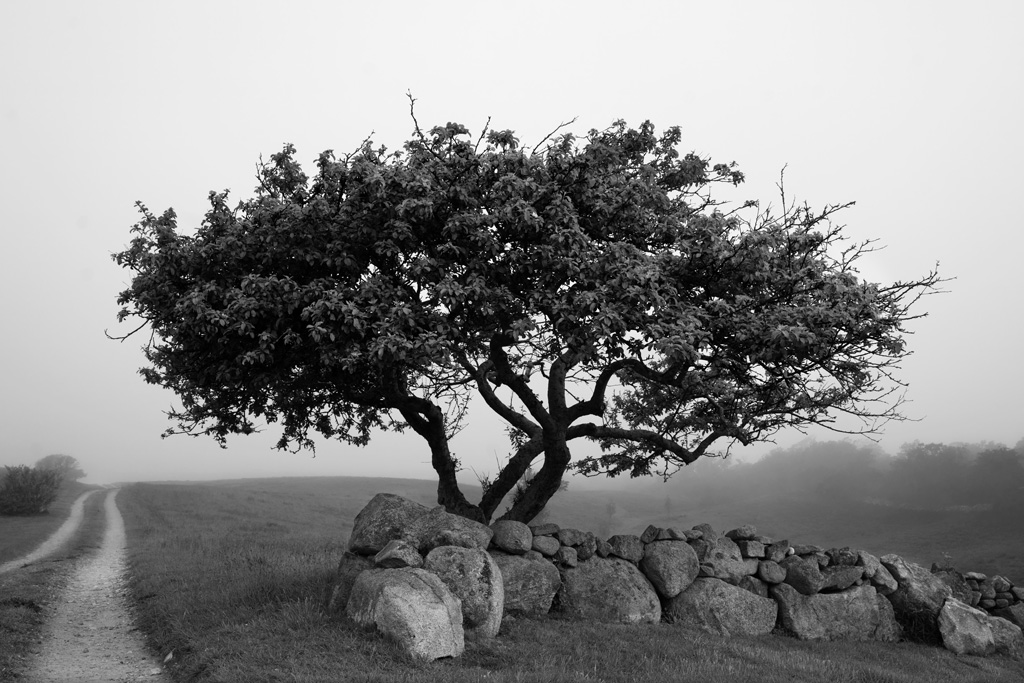While summer in Marin saw county restrictions loosen, schools spent the summer months crafting a plan A, B and C that would make sense for a slew of Covid-19 scenarios this fall. But parents were just recovering from spring.
“By the end of May, we were losing our minds. We were completely burned out,” says Bronwyn Wrobel, who was living in Oakland at the time. They didn’t like the idea of putting their kindergarten-age daughter in front of a screen all day, so she and her husband, Jonathan, set their sights on Marin County’s opening schools.
An 8,000-square-foot home in Novato packed with sheltering-friendly amenities (a pool, basketball court and tree house on two lush acres), plus separate living quarters for the grandparents, caught their eye.
“We were like, ‘Crazy times call for extreme measures,’ ” she says. They jumped on the opportunity, and the family of three, along with three grandparents, moved in, commune-style, right before the school year kicked off. While multigenerational living wasn’t a thought six months ago, it turned out to be the ideal solution for the family.
School’s Out
Of course, many Marin schools did not open for in-person learning in the fall and won’t do so until January, but some have started to reopen while some never closed.
“We had [student] boarders who were here all summer because they couldn’t go home; their countries were closed,” says LeaAnne Parlette, director of San Domenico Lower School and Middle School in San Anselmo.
Using a model proven successful in Denmark, San Domenico teachers were trained on what the school calls a HyFlex model: full days of both synchronous (students work together) and asynchronous learning (students work independently) as well as emotional support, extracurriculars and community building. Outdoor classroom tents, hand-washing stations and water refill stations were set up as part of the school’s health-and-safety measures.
Parlette says that 95 percent of the K–8 students and 74 percent of the Upper School students are opting to return to on-campus learning. “I would say the biggest challenge is teachers having to do dual teaching,” says Parlette. That is, making sure that both on-campus learners and distance learners are fully engaged when teachers can no longer walk around the classroom and adjust their lesson depending on whether or not students are getting it.
“In a virtual setting, it’s so much more difficult to get that type of feedback,” says Michelle Cortez, assistant principal of Novato High School and director of Marin School of the Arts (MSA). “We’ve discovered how to use breakout rooms and tools like Padlet, which is basically the equivalent of raising your hand and having a discussion.” These tools have helped MSA teachers feel the pulse of the room, Cortez says, but it has required learning how to use a brand-new resource.
“I really respect teachers right now,” says Larkspur’s John Glenn, who left his computer consulting business to parent his third and sixth grader full-time. “The problem is that teachers are really struggling just like we are.”
Glenn and his wife, Kate Aiken, chose to keep their sons, both enrolled in the Larkspur–Corte Madera School District, at home for the remainder of 2020 when given the choice to return this fall. “We just thought, ‘I don’t even know if I can get my kid to keep on their mask for an hour, let alone four, let alone six,’ ” says Aiken. “Plus, honestly, having to show up to this alien environment of a school that they love but that’s going to feel completely different.”
Distance learning has come relatively easy to their boys, but it’s not lost on both parents that they have more advantages in being able to stay home than most. “When I talk to two working parents who are on conference calls full-time, I don’t even know how they could possibly do it,” says Glenn. “I find myself busy, just all day long, supporting my kids.”

The Equity Problem
The issue of equity is something Marin schools, like many across the country, are grappling with, especially as parents with means have raced to form pandemic pods with private teachers while many low-income children continue to struggle at home without
reliable internet.
Throughout Marin, says Cortez, schools are starting small hubs that are specially designed for populations of students who are often marginalized. “At Novato High School, we have a small EL (English Learners) hub where on a daily basis we have a controlled cohort of kids who come in and get the support they need,” she says. “They’re still in Zoom classes with their teachers, but they have stable internet. They have any of the resources that they need to do their science experiments, math, readings.” The special education department continues to provide personnel for kids with special needs too, albeit from a distance.
Novato Unified School District as well as other schools in Marin County transitioned to a four-by-four schedule, which means kids take up to four classes per semester, but the remote schedule is modified to two Zoom sessions of 90 to 100 minutes each day of synchronous instruction.
“That choice was made because of research about how exhausting it is to be on Zoom, so we didn’t want kids to take more than two classes a day of live instruction,” says Cortez.
The Emotional Element
But even with three or four classes a semester, if kids are not staying on top of their independent work they can easily get lost and distracted. “When kids are not understanding the instructions, they start to withdraw because developmentally that’s just what teenagers do,” says Cortez.
Mill Valley–based family therapist Marianne Shine works with local teens to help manage their heightened anxiety at this time using a form of drama therapy. “What I’m noticing is that there is a real sense of an existential crisis happening among young people much earlier now than ever before,” she says. Adding to the strain are an unstable political climate, the effects of climate change, and the inevitable anxiety that comes from scrolling the news and social media. “And then when it comes down to doing their math homework at night, they’re like, ‘What’s the point of this?’ ” says Shine.
Cortez agrees there’s a huge wellness component that wasn’t as intense in the past. “It’s really reaching out to students to give them the tools that they need to mitigate the loneliness and the isolation that they’re feeling.” That can include encouraging kids to step away from technology to take care of their mental health. MSA students have posted to a school Wellness Log with photos of them baking, painting, biking and reading an actual book. “So it’s really about engagement, engagement, engagement,” says Cortez.
Abby Shewmaker, a junior at Redwood High School, says her lack of motivation was more acute in the spring than it is now that her grades could make a difference in college admissions. But the isolation that stems from sheltering at home has affected her. “I do think that there is a social aspect of high school that I’m definitely missing out on, but I was more bummed about that when this started,” she says. “The crazy thing is, I feel like I’m starting to forget what life was like before the pandemic.”
Close Quarters
For many Marin families, home life has taken a bittersweet turn. Shewmaker admits that it has been nice to be home with her family and there’s no rush to return to the social pressures of school. “But sometimes my mom will walk in and say, ‘Oh, I got this thing from the grocery store.’ I’ll be like, ‘Mom, I’m taking a test!’ ”
As the work-at-home parent, Aiken sees both sides of the distance learning coin: “You get exposed to all the gnarliness of moment-by-moment kid management,” she says. “I feel like every time I walk out of this room, I’m at risk of being pulled into mom mode when it’s not really what I can afford to do in my workday.”
Being a full-time parent right now, says Glenn, is like returning to the days of having toddlers, where there is a constant demand of answering kids’ needs and keeping them out of trouble with little opportunity for a break. “My wife can get out and walk for an hour to take a work call. But if I left for an hour to go for a walk, somebody would be in the hospital.”

It Takes a Village
Cheryl Contee, a single parent based in Sausalito, has found parenting during the pandemic especially hard without drop-in child care at her community center and the closure of Marin playgrounds.
“I think the failure of the government to really figure out how to provide safe, affordable child care options is real,” says Contee. “And the slow reopening of playgrounds and kid-friendly outdoor spaces is really making a tough situation even tougher.”
Women — especially mothers, women with seniority in their business and Black women — have faced distinct challenges as a result of Covid, according to a 2020 McKinsey report. In fact, one in four women are considering downshifting their careers or leaving the workforce due to Covid-19, and that could have lasting effects on gender and racial diversity in corporate America.
But Contee sees a silver lining, having the resources to afford full-time child care while she runs her own business as founder and CTO of Do Big Things, a creative digital agency focused on diversity and social justice causes. “I’m more fortunate than most in that I have a caretaker, so I have a level of control and flexibility that most don’t have.
“But how do you explain to a 4-year-old, and for that matter any kid, when their world suddenly turns upside down?” she asks. Contee’s extroverted son was in preschool when it abruptly shut down in March. “He really grieved losing preschool, losing his friends, losing the playground. He’s gone through his own cycle of grief and really regressed, which I heard from a lot of parents in our cohort.”
Wrobel, who had to settle for online learning despite the move to Marin, says her daughter gets irritated having to do school in front of a screen. “She’ll look at me and roll her eyes. She’s used to, in the Montessori style, doing her own thing, being in control of her own pace, her own work.”
There have been inexplicable meltdowns too. “We’re not able to identify a trigger, like what happened? What started this?” says Wrobel, a psychotherapist, who was already working from home before the pandemic hit. “Then we have to stop and go, ‘Oh, it’s just everything. She feels our stress. She feels our tension. She feels our fear.’ ”
But communal living, six weeks in, has had its benefits, says Wrobel. Everybody pitches in on the yardwork, housework, child care, shopping and cooking, as in a true commune. “I mean, there’s all these added benefits that none of us expected because we’re all just in survival mode, that are actually just so nourishing and feeling very wholesome.”
The need for community and connection, when one is deprived of it, can only intensify as families continue to keep their distance. “Human beings were traditionally sort of in a culture of the circle, so you’d have the whole community raise the young people and the whole community would help with the elderly,” says Shine. “And it would just be this feedback loop where people were constantly helping each other.”
The proverbial village may look more like a pod, but from a distance, teachers, administrators, essential workers and fellow families are coming together to make the best of a surreal situation, and there is something comforting in that. “Even though our world became smaller,” says Contee, “that world is pretty cozy.”










